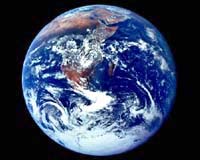
 |
The Commonwealth Scientific and Industrial Research Organisationstudy has found that by 2030 there will be reduced rainfall, around double the number of very hot summer days in some states and fewer frosts in the regions that experience them.
The release of the study, reported in the journal "Nature" by European researchers last week, coincides with the anniversary of the devastating Canberra bushfires which killed four people and destroyed 507 homes last January 18.
More than 3,000 people attended a memorial ceremony Sunday to mark the disaster.
The study forecasts that the number of days over 35 degrees CelsiusFahrenheit) would double in Australia's southeastern states by 2030, from between one and three to between two and six.
"By the year 2030, we expect most of Australia to become 0.4 to 2.0 degrees Celsius warmer on average, with 10 to 50 percent more summer days over 35 degrees Celsius," CSIRO senior research climate scientist Kevin Hennessy said in a statement last week.
The average number of summer days over 35 degrees Celsius in Canberra would increase from four days at present to between five and 10 by the year 2030, the study found.
In Melbourne the average number of days over 35 degrees Celsius would increase from eight to between nine and 12, in Adelaide from 10 to between 11 and 16, in Canberra from four to between six and 10, and in Perth from 15 to between 16 and 22.
In the south and east, which are just emerging from the worst drought in a century, up to 15 percent less rainfall is expected by 2030, especially in winter and spring, the report says.
In the southwest, rainfall may decline by up to 20 percent.
"With likely increases in evaporation, this means drier conditions in future, with reduced water supply and greater water demand," Hennessy said.
"In the southwest, rainfall has already decreased by about 20 percent since the mid-1970s."
Climate change would also lead to between 20 and 80 percent fewer frosts in those areas that experience frost, such as the capital Canberra.
"Hotter and drier conditions would lead to greater fire risk, more heat stress for humans, crops and livestock, greater energy demand for air conditioning," Hennessy said.
"But there will also be less energy demand for winter heating and less frost damage, so there will be winners and losers."
The findings are consistent with CSIRO and Bureau of Meteorology statements about global warming in Australia for some years.
Strategies being introduced to adapt to climate change include water demand management, such as restrictions and recycling, breeding and selection of heat-tolerant and drought-tolerant crops, adjusting cropping calendars to take advantage of a longer frost-free period, more shade and water for livestock and heat-smart buildings.
"However, some animals and plants may be highly vulnerable to climate change, with limited options for adaptation," Hennessy said.
"For example, coral reefs are likely to experience more bleaching, and some Western Australian frogs and east Australian alpine mammals will find their habitats shrinking as the temperature rises."
Hennessy said the study was consistent with findings that summer heatwaves would be common in Europe by the end of this century.
The Bureau of Meteorology has said 2003 was Australia's sixth warmest year since 1910.
TERRA.WIRE |